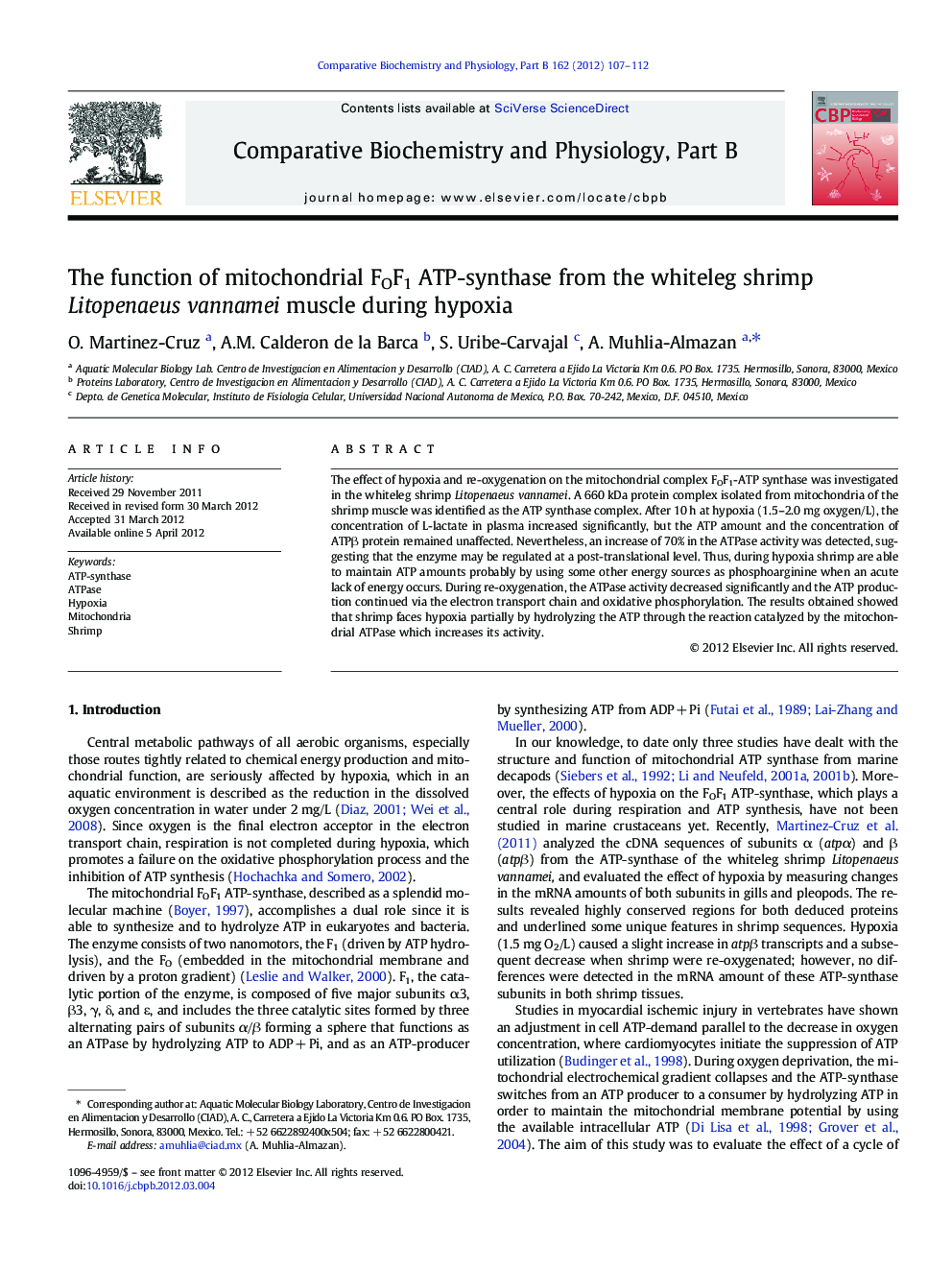| Article ID | Journal | Published Year | Pages | File Type |
|---|---|---|---|---|
| 1975478 | Comparative Biochemistry and Physiology Part B: Biochemistry and Molecular Biology | 2012 | 6 Pages |
The effect of hypoxia and re-oxygenation on the mitochondrial complex FOF1-ATP synthase was investigated in the whiteleg shrimp Litopenaeus vannamei. A 660 kDa protein complex isolated from mitochondria of the shrimp muscle was identified as the ATP synthase complex. After 10 h at hypoxia (1.5–2.0 mg oxygen/L), the concentration of L-lactate in plasma increased significantly, but the ATP amount and the concentration of ATPβ protein remained unaffected. Nevertheless, an increase of 70% in the ATPase activity was detected, suggesting that the enzyme may be regulated at a post-translational level. Thus, during hypoxia shrimp are able to maintain ATP amounts probably by using some other energy sources as phosphoarginine when an acute lack of energy occurs. During re-oxygenation, the ATPase activity decreased significantly and the ATP production continued via the electron transport chain and oxidative phosphorylation. The results obtained showed that shrimp faces hypoxia partially by hydrolyzing the ATP through the reaction catalyzed by the mitochondrial ATPase which increases its activity.
